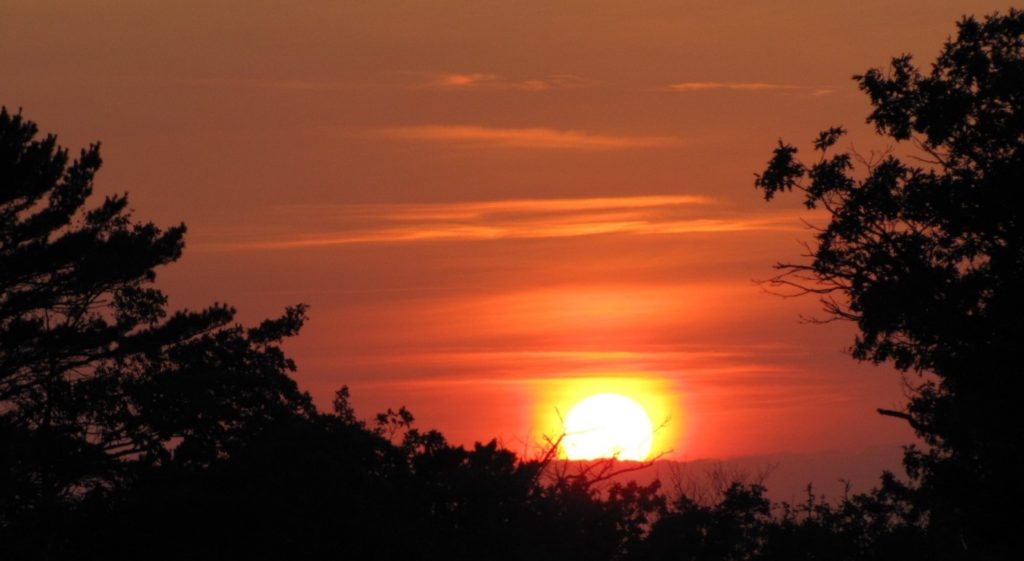by Steve Kariainen: HFHC Great Lakes Director

Most of us know, “Red sky at night, sailor’s delight. Red sky in morning, sailor take warning.”
There appears to be a scientific basis for the rhyme, as sunlight passing through dirty air is dispersed differently than clean air, meaning red sunsets often do predict nice weather for the next day. Smoke from wildfires in the Western U.S. and Canada can sometimes be carried thousands of miles eastward. As a result, on days when those of us in the Great Lakes Region enjoy beautiful red sunsets, we can also look forward to good weather on the following day.
Since the mid-1980’s the average annual number of Western fires has remained relatively flat, but the average annual acres burned has tripled due to a large increase in average fire size. Over that same timeframe, the annual cost of federal firefighting has grown tenfold. More than 50% of the U.S. Forest Service annual budget is now spent on wildfire, compared to just 16% in 1995. But these costs pale in comparison to the cost to those directly impacted by the wildfires who all too often pay with their homes, their property and occasionally with their lives.
Some point to global warming as the main reason for the increase in annual wildfire impact. But people living in rural Western communities recognize that decades of reduced timber harvests and increased roadless areas have effectively turned forests into large tinderboxes just waiting for an ignition source. Quite simply: More fuel + fewer roads = bigger fires!
The Great Lake Region has largely been spared from devastating wildfires in recent times, but this region was home to the 1871 Peshtigo Fire, the deadliest wildfire in U.S. history. That fire killed an estimated 1,500 people and burned some 3,000,000 acres in Wisconsin and Michigan.
People living in the Great Lakes Region need to know that there is still a potential for large wildfires to occur under the right conditions. Forests need to be actively managed so that timber harvests and prescribed burns control the age class, species composition, and density in a way that makes them less likely to catch on fire and to reduce the likelihood of any such fires getting out of control.
The next time you see a beautiful red sunset in the Great Lakes Region, think about the people who are dealing firsthand with the horrific consequences of the Western wildfires. And recognize that our region is not immune to the threat from large wildfires.



